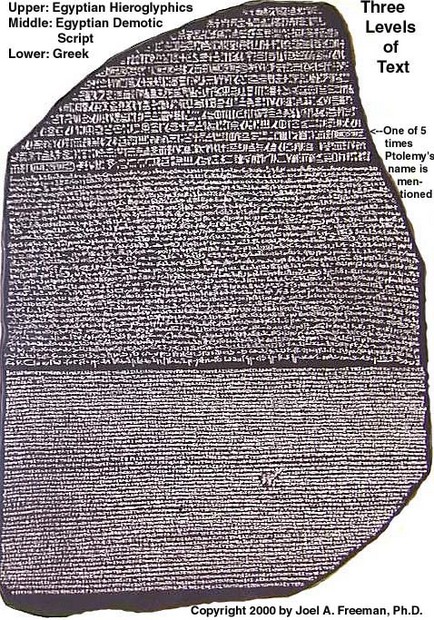The Rosetta Stone is a stone that was found in 1799 in Rosetta, Egypt by French soldiers rebuilding a fort. It was carved in 196 B.C. which contains Egyptian and Greek using hieroglyphics, demotic, and Greek. As mentioned in the Brief Biography section, Thomas Young had an amazing knack for languages. In 1804, Young got a copy of one of the stones and decided to try to decipher some of it. He started with the demotic and compared it to the Greek names. During his work Young made several important breakthroughs in decoding the stone. He discovered that the demotic symbols were just simpler versions of the hieroglyphical ones which was a huge breakthrough to the Rosetta Stone community that was studying it. It turned out that the demotic script was simply an easier way to write hieroglyphics, sort of like how cursive and printed English are different but the same. Young put all of his findings into an article for the Supplement to the 14th Edition of the Encyclopaedia Britannica published in 1819.
